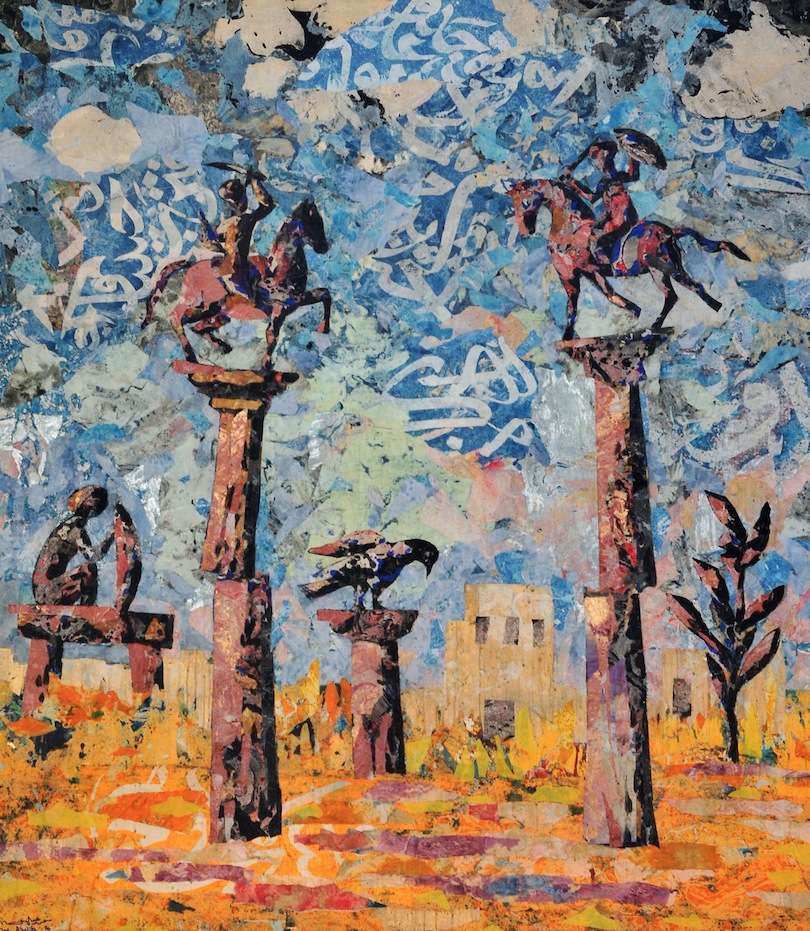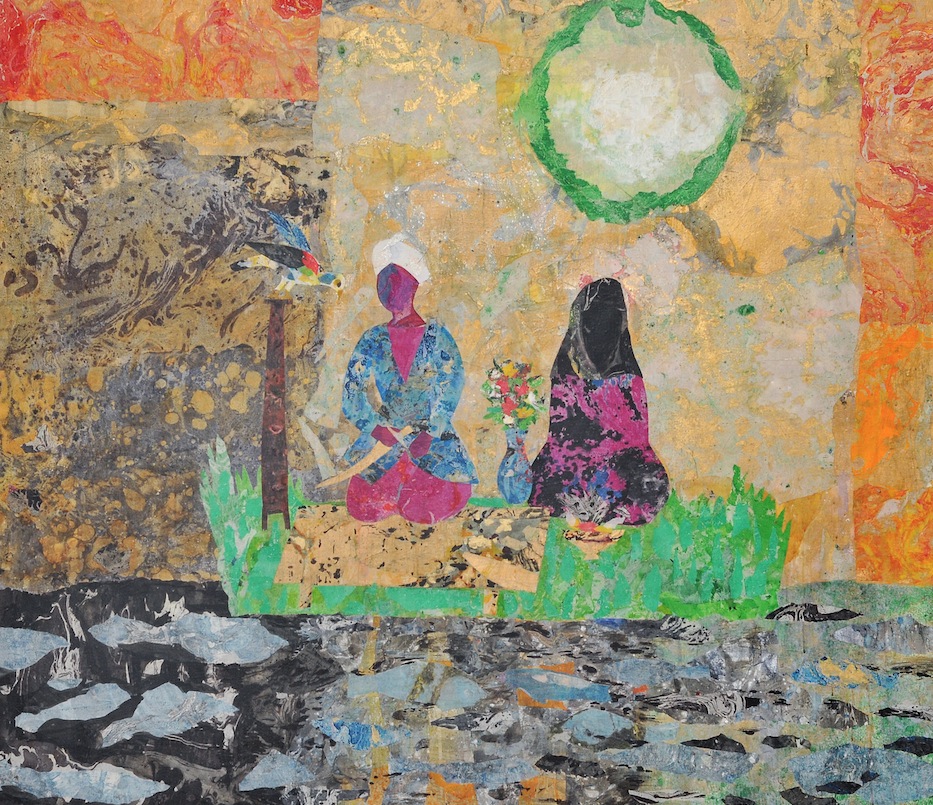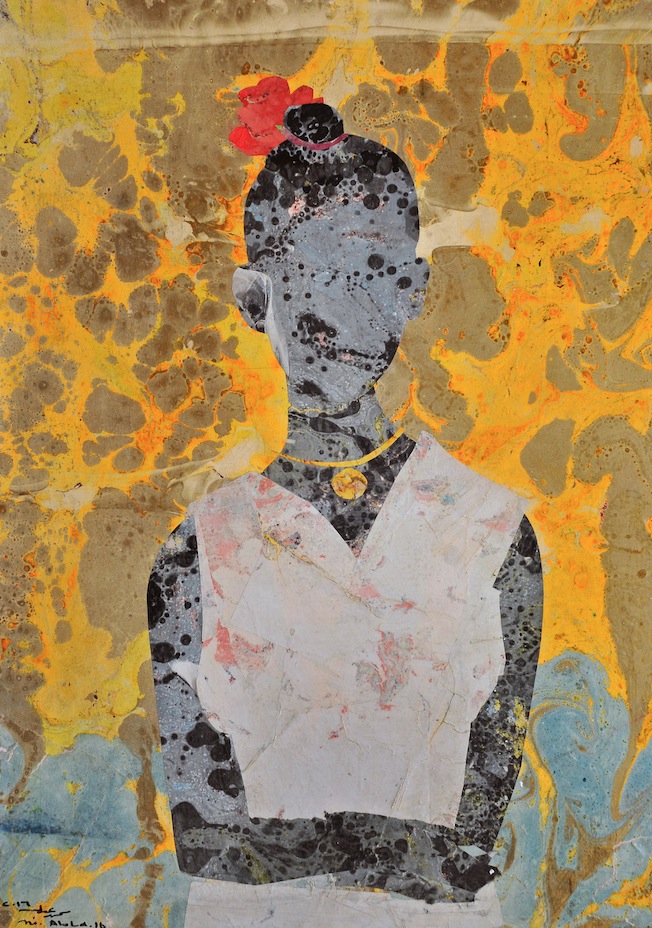Sweet-scented spices, glittering jewels and generous rolls of supple silk were often brought westward by traders along the Silk Road. A network of merchantry routes that were formally established during the Han Dynasty of China, this complex labyrinth connected the East to West and, by doing so, linked ancient peoples in commerce. Named by the German geographer, geologist and traveller Ferdinand von Richthofen, who called the meandering passages ‘Seidenstrasse’, luxury products ranging from solid gold nuggets to bundles of wool would be exchanged, both on land and over seas. The Silk Road transported more than just merchandise, however; intellectual and cultural exchanges were inescapable, and had a profound impact on various civilisations for generations.

Mohamed Abla: The Silk Road showcases a selection of abstract artworks that explore folktales from north Africa, the Levant, Asia and the Indian subcontinent, most of which have been derived from the creative’s research into the Silk Road’s dynamic history. The concept is largely inspired by one of the prolific artist’s previous exhibits; entitled Tales For Reem, the display presented a collection of fantasy stencil and collage-based mono-prints. “Three years ago, I had an exhibition about fairytales, which was for my granddaughter - the daughter of my son,” he explains with palpable affection. “She was born, and I was seeking to make an exhibition for her to tell her a story so that when she grows up I can tell her, ‘This story, I made it for you.’”

More recently, Abla selects specific fairytales that he considers symbolic of the issues that have overshadowed Egypt since the 2011 revolution. Despite these problems, for Abla, being creative in his homeland has become much easier. “Years ago, being an artist in Egypt was difficult,” he admits, “because there were very few artists at that time who were really dealing with political and social aspects, or conflicts and problems.” He also argues that, during the 20th Century, artists were discouraged from embracing their creativity. To be successful, he says, you must be able to enjoy the artistic process. “I say to artists, ‘You have to play. You have to be joyful. You have to enjoy it yourself, and you have to take it easy.’ Technique is not that important. The important thing is the idea, and what’s behind that idea.”

Back to the present, and Mohamed Abla: The Silk Road is set to be the first showcase at Tabari Artspace under the gallery’s new name, having previously gone by Artspace Dubai. One of the first commercial art galleries in the region, it’s dedicated to the promotion of modern and contemporary Middle Eastern art and has enjoyed a longstanding relationship with Abla. “We’ve worked together for a long time,” he tells MOJEH. “For more than 10 years now.” He chuckles in disbelief at how time has flown. “They’re very active and they have many ideas, and I really like to work with them.” For Abla, Middle Eastern artwork is in a league of it’s own. “The quality of our art is very strong and very real. It is real art. Art that really has to do with society, with the environment. It deals with real problems.” Dubai, as a destination, also holds a place close to the Egyptian’s heart. “Dubai has brought history and so many other things to the Middle East.” And for the month of October, it will also bring a bout of history, and a spell of fantasy to Dubai’s art aficionados, thanks to Alba and his extraordinary imagination.
Mohamed Abla: The Silk Road at Tabari Artspace, Dubai, 10 October – 24 November 2017





